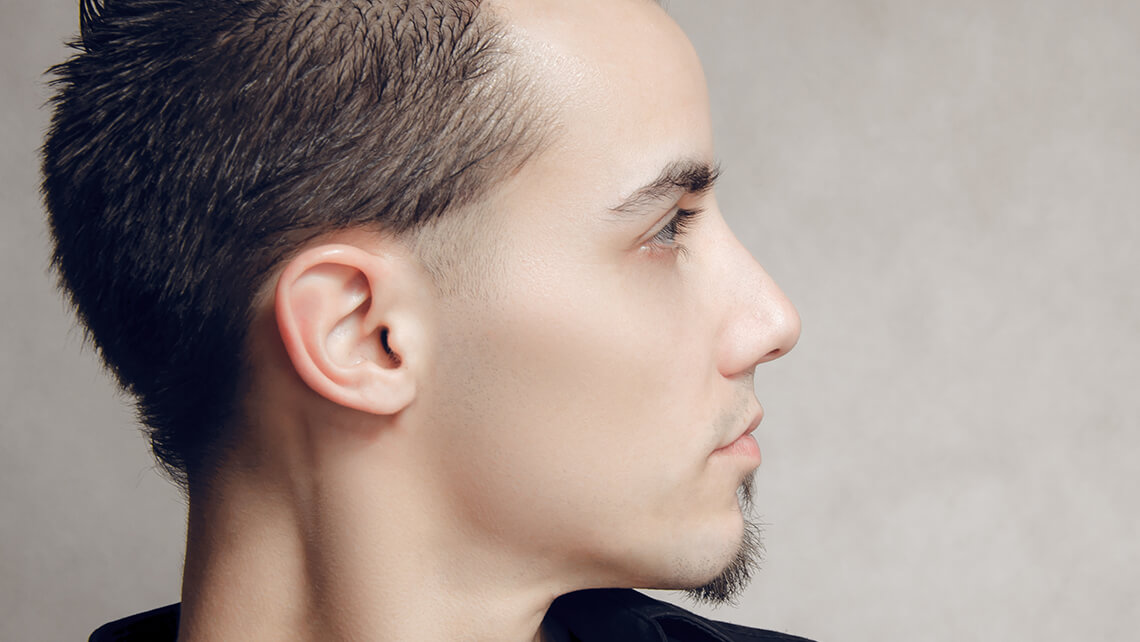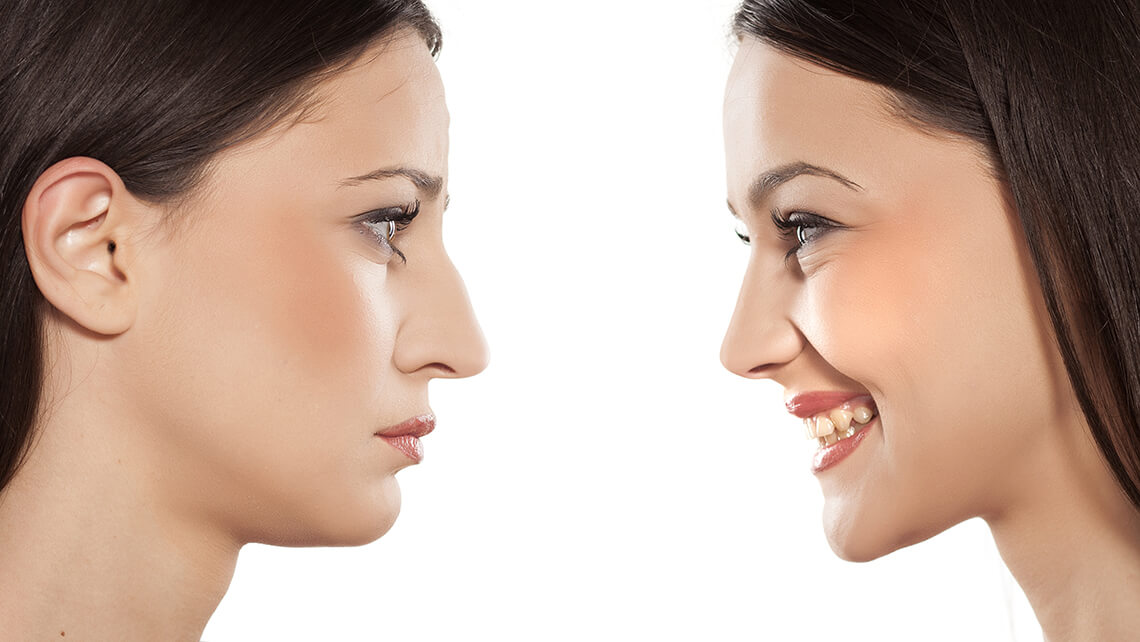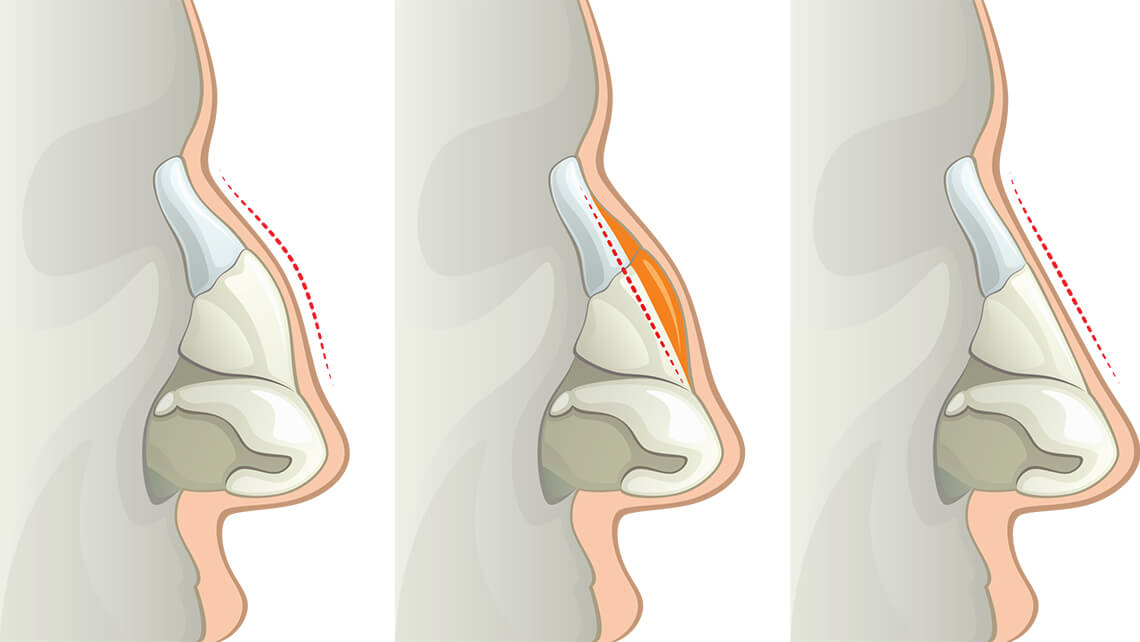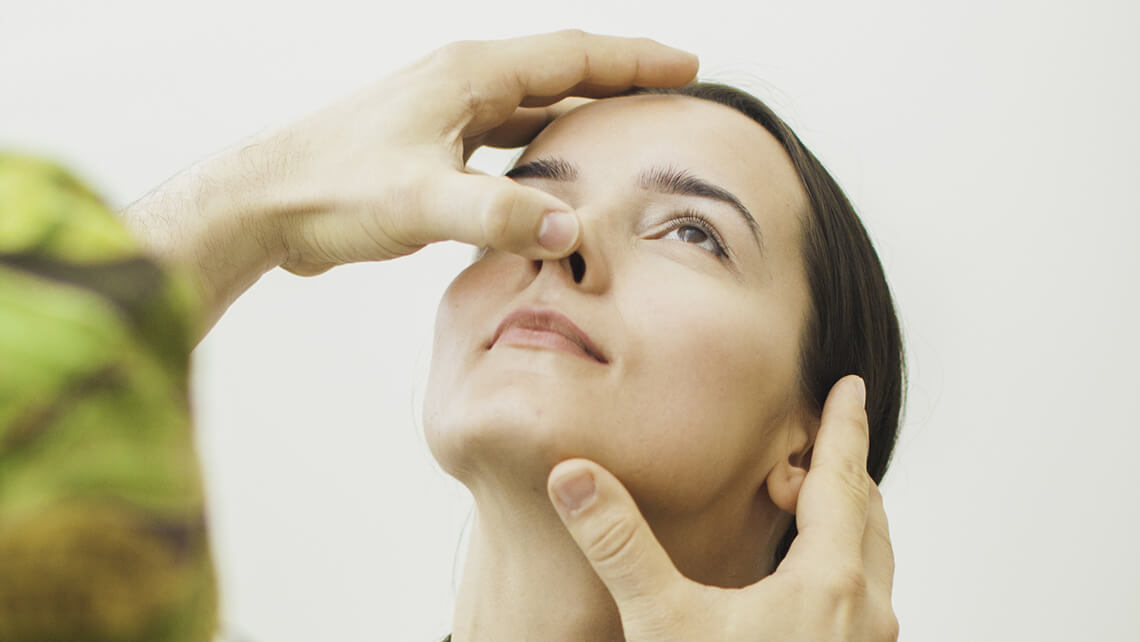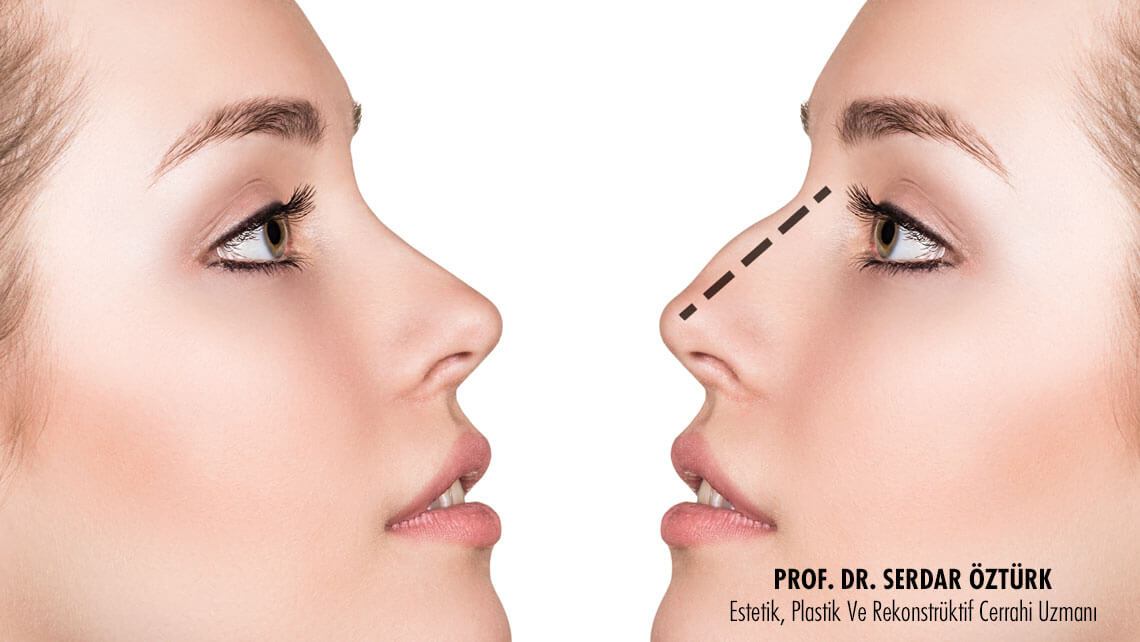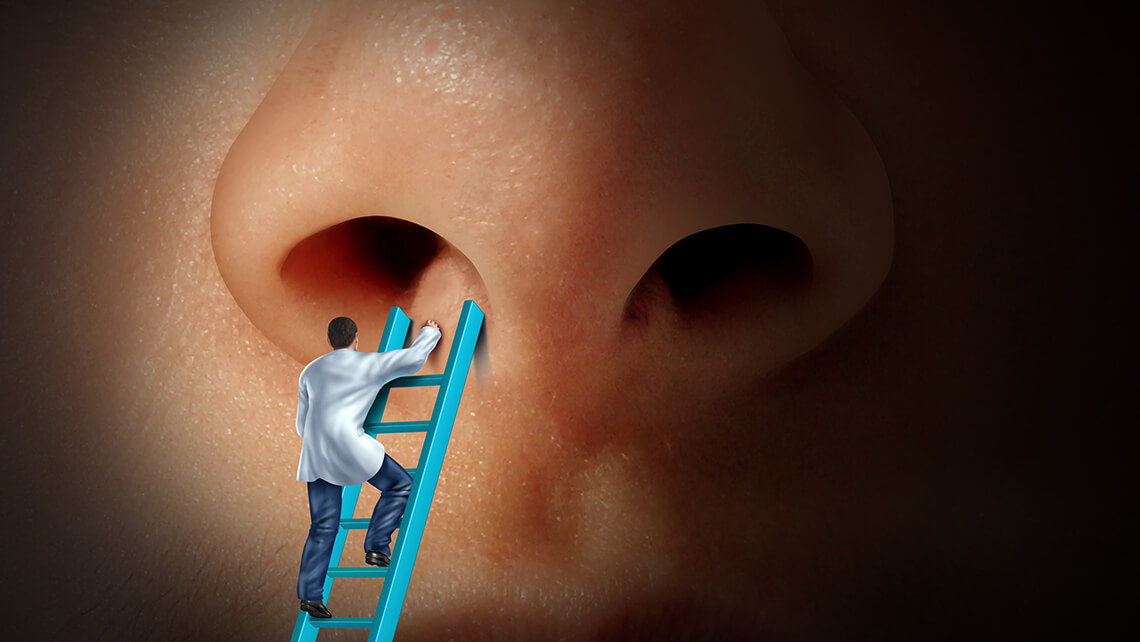We can list the nasal deformities we often see in rhinoplasty under the following headings. These can exist in different combinations in a person. Rhinoplasty is a surgical procedure, which mostly involves reduction procedures and sometimes augmentation procedures in combinations.
Nasal Hump:
It is ethnically the most common type of nose in our country (especially in the Black Sea region). When viewed from the profile, the unevenness on the nasal ridge can be seen much more obviously. The size of the nasal hump consisting of cartilage and bone structure differs from person to person, and the hump is accompanied by nasal tip ptosis.
Nasal Tip Ptosis:
The nasolabial angle (angle between the nasal tip and the lip) is usually between 90 and 100 degrees in men, and 100 and110 degrees in women. If the angle is below these values, the nasal tip is droopy and it must be lifted to achieve the ideal angle. If the angle is above these values, the nostrils can be seen when viewed from the front, and this is an undesirable condition called “piggy nose”.
Wide Nasal Tip:
When the cartilage structure forming the nasal tip is large, it causes the nasal tip to look wide and rounded. The structure of this cartilage is of great importance for the shape and angle of the nasal tip.
Narrow Nasal Tip:
The cartilage structure forming the nasal tip looks narrow due to its structural shape or a previous surgery.
Pointy and Long Nasal Tip (Pinocchio Nose):
The nasal tip cartilages extending forward in addition to the condition called the narrow nasal tip creates the Pinocchio nose.
Long Nose:
We evaluate the nose length based on the distance from the nasal root to the nasal tip. It is especially seen in structurally large eagle-like noses.
Short Nose:
Contrary to the long nose, it is seen in people with structurally smaller nasal bones, or it may develop after a previous surgery (removal of a part more than necessary from the nasal septum cartilage).
Crooked Nose:
They are curvatures which are structurally congenital or usually occur in consequence of a trauma. When viewed from the front, they are tilted to the right or left according to the midline of the face, or they are in the form of C or S.
Wide Nasal Base:
Depending on the size of the nostrils or the structure of the cartilage that forms the nasal tip, there may be excessive lateral width at the bottom. Ethnically, it is more common in the black and Asian people.
Excessive Nose Projection:
It is the condition where the nose is too much ahead according to the facial plan. In large eagle-like noses, it may be caused by the cartilage that forms the nasal tip.
Inadequate Nose Projection:
It is the condition where the nose remains behind according to the facial plan.
Wide Nose:
It is the condition where the nasal ridge looks wide when viewed from the front. Structurally, it may be caused by the conditions of the bone and cartilage structures that form this area, but it may also develop in consequence of a trauma.
Narrow Nose:
Contrary to the wide nose, narrow nose has a narrow nasal ridge that looks like a line.
Deep Nasofrontal Angle:
The nasal root is quite deep.
Straight Nasofrontal Angle:
The starting point of the nose is indistinct. The nose looks like the continuation of the forehead.
Saddle Nose:
This nasal shape, also known as boxer’s nose, usually develops in consequence of a trauma or after the removal of excessive pieces of cartilage in a nasal septum deviation surgery.


